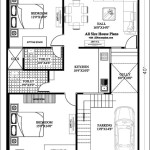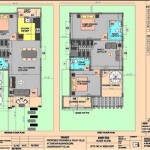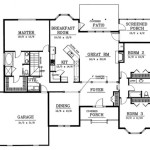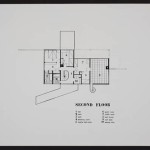Sample DWG House Plans: Essential Aspects for Homeowners
Sample DWG (Drawing) house plans are essential tools for architects, designers, and contractors when designing and constructing residential buildings. These plans provide a comprehensive visual representation of the house, including its layout, dimensions, and construction details. Understanding the key aspects of sample DWG house plans can empower homeowners to make informed decisions throughout the building process.
1. Plan Components
Sample DWG house plans typically include several components:
- Floor plans: Show the layout of each floor, including rooms, walls, windows, and doors.
- Elevations: Depict the exterior walls of the house from different angles.
- Sections: Cut-away views that reveal the interior structure and construction details.
- Foundation plan: Provides details of the house's foundation system.
- Roof plan: Shows the shape, slope, and materials used for the roof.
2. Scaling and Dimensions
Sample DWG house plans are drawn to scale, meaning the dimensions represented on the plan correspond to the actual dimensions of the house. This allows homeowners to accurately visualize the size, shape, and proportions of the rooms and the entire house.
3. Materials and Specifications
Sample DWG house plans often include notes and specifications that provide information about the materials and construction methods used for various elements of the house. This includes details such as framing materials, roofing materials, and types of windows and doors.
4. Site Plan
In addition to the house itself, sample DWG house plans may include a site plan that shows the location of the house on the property, as well as the position of driveways, walkways, patios, and landscaping.
5. Customization and Modifications
While sample DWG house plans can provide a starting point for home design, they can be customized and modified to meet the specific needs and preferences of homeowners. Architects and designers can make changes to the layout, dimensions, materials, and finishes to create a truly unique and personalized home.
6. Building Codes and Regulations
It is important to ensure that sample DWG house plans comply with all applicable building codes and regulations in the area where the house will be built. These codes address safety, construction standards, and energy efficiency requirements.
7. Accessibility and Usability
Homeowners should consider the accessibility and usability of the house design when reviewing sample DWG house plans. Factors such as wide doorways, accessible showers, and ramps for wheelchair users can be incorporated into the plan to ensure the home meets the needs of all occupants.
By understanding these essential aspects of sample DWG house plans, homeowners can actively participate in the design and construction process, making informed decisions that will result in a house that meets their vision, needs, and lifestyle.
Making A Simple Floor Plan In Autocad Part 1 Of 3

Floor Plan Free Cads

Autocad Sample House Plans Dwg Colaboratory

Modern House Plan Dwg

2d Floor Plan In Autocad With Dimensions 38 X 48 Dwg And File Free First Plans House Layout Modern

House Dwg Free Cad Blocks
An Architectural House Plan 2d Floor Plans In Autocad Upwork

How To Draw Floor Plans In Autocad Edrawmax

1 5 2k Sq Ft Free House Plans Cad Dwg

Simple Residential Building Plans Dwg Free Built Archi








